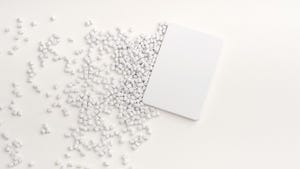Slow yet steady growth in manufacturing
October 8, 1999
The continuing recovery in the U.S. manufacturing
sector is rather slow, showing less than dramatic
results. That applies particularly to those
injection molders who are anticipating solid
increases in export orders, back to levels last
seen in early 1997.
Even though Asia is recovering quite nicely, it
will be several months or more before molders here
will see any significant increase in export
orders. Medical devices—a hot export item in the
past—are a good indicator: U.S. exports in 1998 of
such devices declined a sharp 23 percent. This
directly hurt injection molders, considering the
large number of molded components in this
high-value, high-precision application. From
January 1999 through July 1999, exports rose just
7.8 percent.
The story is the same in other molding markets
where healthy exports gave injection firms that
extra boost in growth back in 1996 and 1997.
Exports are down for small appliances, durable
goods, consumer goods, high-quality toy and
entertainment devices and all types of
electronics. Molders who make high-value-added,
high-precision parts have been hurt the most.
While the U.S. remains a strong market, high
levels of imports in these applications from Asia
as well as a slow market in Europe (see
IMM’s International Molding Report) have
limited expansion.
Manufacturers, still feeling the lingering affects
of the global financial crisis, cut 63,000 jobs in
August. That more than wiped out an increase of
51,000 jobs in July, according to the U.S.
Department of Labor. Note, by comparison, that
15,000 computer service jobs alone were added in
August.
Industrial machinery, office equipment, and
consumer goods remain the hardest hit molding
sectors, while molders supplying automotive,
housing, and furniture are benefiting from an
almost unprecedented boom.
Future Orders Promise Growth
One of the
most important indicators for the future health of
injection molding is durable goods orders. Orders
to U.S. factories for big-ticket manufactured
goods surged in July, rising 3.3 percent, with
gains posted for everything from industrial
machinery and electronics to transportation
equipment.
In practical terms this means molders should see a
corresponding order increase in August, September,
and possibly October. An informal survey of a few
molders making components for durables shows that
overall orders for parts are again on the rise
after slumping early in the year.
In September, the Commerce Department reported
that the 3.3 percent increase was the biggest gain
since December 1998, when durable goods orders
rose 3.4 percent. The increase in durable goods
orders followed a .5 percent gain in June, which
was better than what the government had previously
estimated, and a 1 percent gain in May.
Orders for industrial machinery, the category that
includes computers and machine tools, had the
strongest showing in July, rising a hefty 8.4
percent, the largest increase since January 1995.
That followed sharp declines of 4.5 percent and
3.9 percent in May and June, respectively. Note
here that through July 1999 imports of all types
of injection molding machines are about 10 percent
below 1998 levels, indicative of a slower rate of
capital spending by molders.
Also in July, orders for electronic and other
electrical equipment, which include everything
from semiconductors and circuit boards to
telecommunications equipment and home appliances,
posted a strong 5.9 percent gain in July,
following a 3.5 percent increase in June.
If transportation were excluded, overall orders
for durable goods would have risen 3.7 percent,
the largest increase since February 1997.
Car Sales: How High?
How high can car
and light truck sales go? Almost every month this
year expectations increased. But few molders have
seen corresponding increases in their parts output
as low cost imports grab an ever growing share of
the total automotive parts market.
Robust August sales gains from Ford Motor
propelled the U.S. vehicle industry to its
strongest monthly selling rate in 33 years in
August. New cars and trucks in August sold at a
pace that would equal an annual total of 17.8
million units, marking the fifth time this year
the seasonally adjusted annual sales rate topped
17 million. Total vehicle sales rose 20.4 percent
to 1,485,049. The total a year ago was held back
by two strikes at General Motors.
Many now expect the 1999 light vehicle total to
finish above 16.5 million units. The all-time
record was 16.1 million units in 1986. What does
this mean for U.S. molders? We anticipate molding
output at U.S. plants for automotive parts to rise
just 3.2 percent this year on a value basis, while
imports of car and truck parts are likely to show
a rise of 17.8 percent in the same time period.
Productivity Issues
The implications of
slower productivity are far from clear at this
time, but are most likely to spell trouble if this
trend continues. U.S. worker productivity slowed
sharply in the second quarter of this year, says
the Labor Department. Productivity, measuring the
output per hour of workers outside the farm
sector, rose at an annual rate of just .6 percent
in the April-June quarter. The Labor Department
has revised down its second-quarter estimate from
a previously reported 1.3 percent gain. The .6
percent increase was much weaker than the 3.6
percent productivity growth recorded in the first
quarter.
Rising productivity can help to keep inflation low
by allowing businesses to boost their output of
goods and services without incurring higher labor
costs. This report may force the Fed to increase
interest rates one more time later this year, say
many experts. This, in turn, would clearly impact
manufacturing growth.
The Molders
You May Also Like


